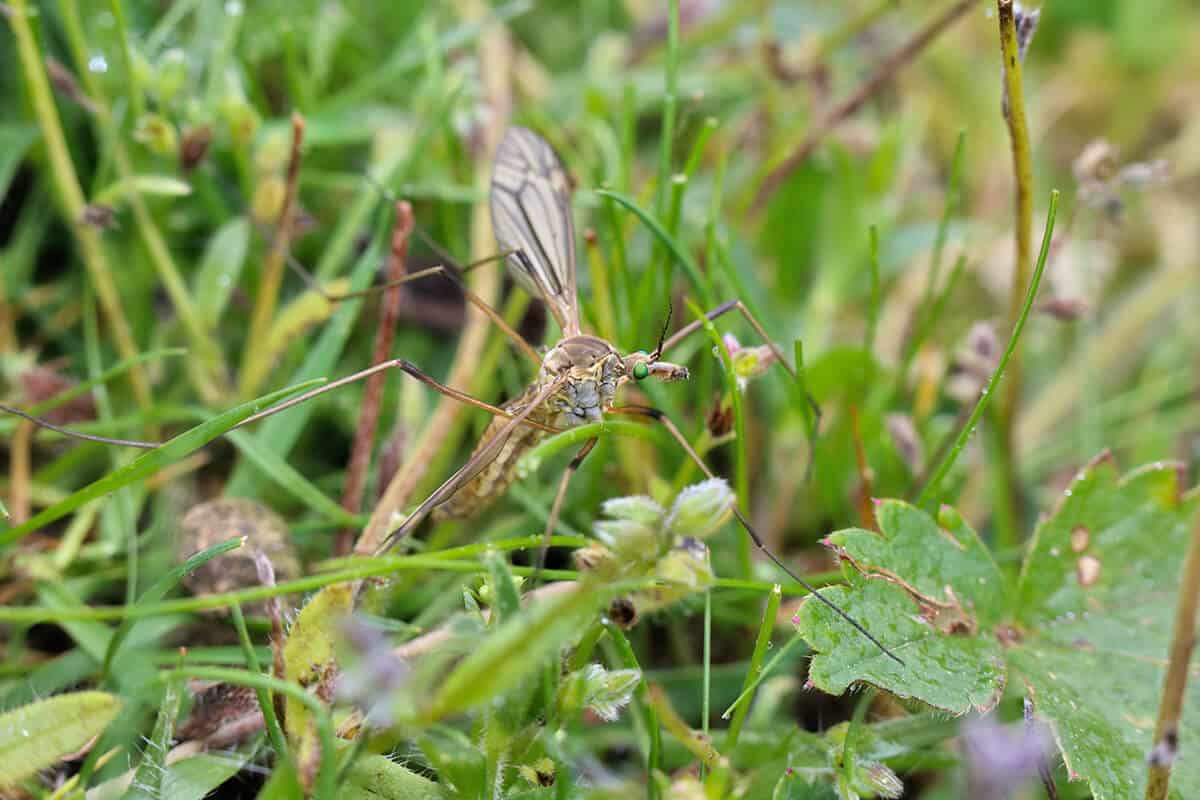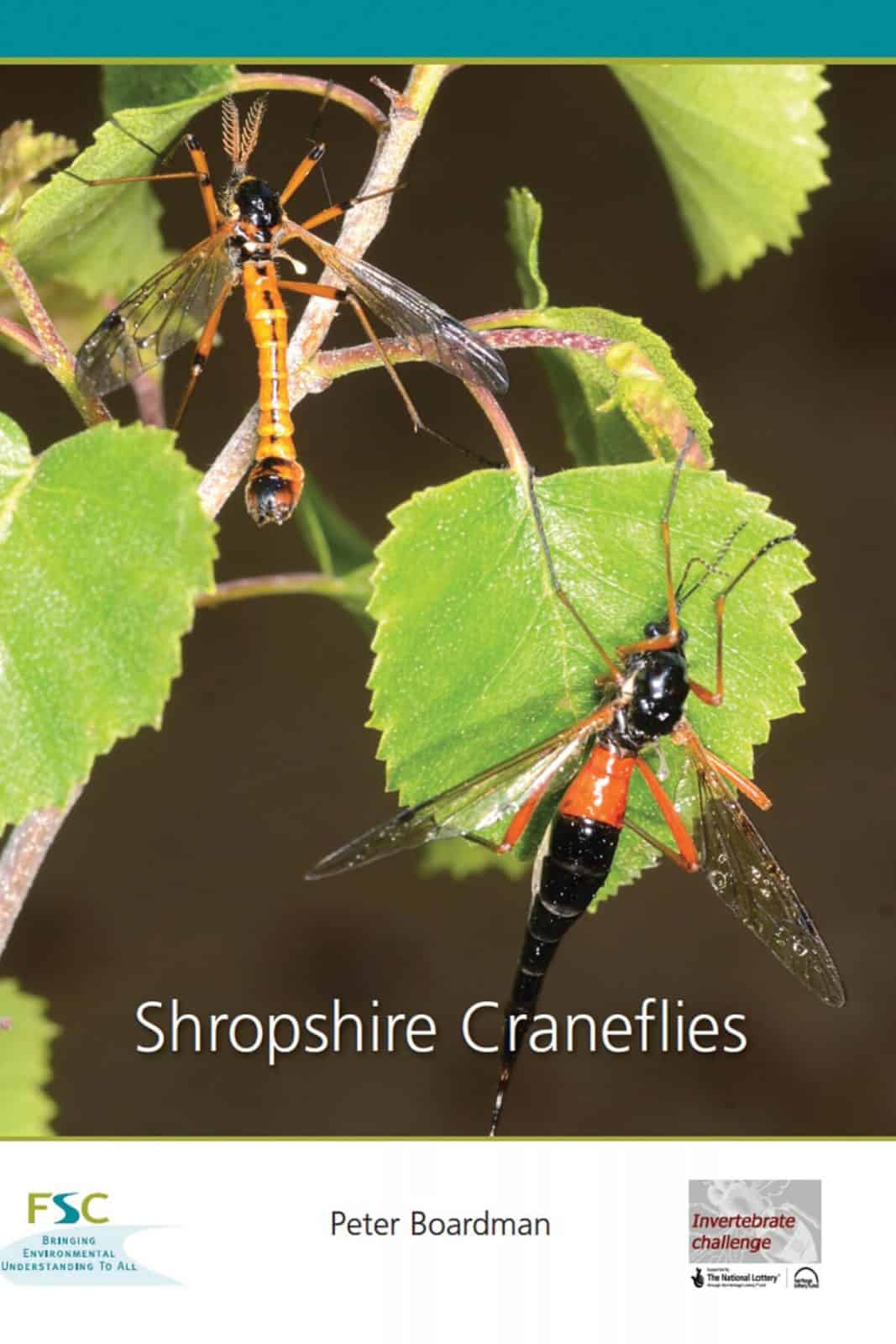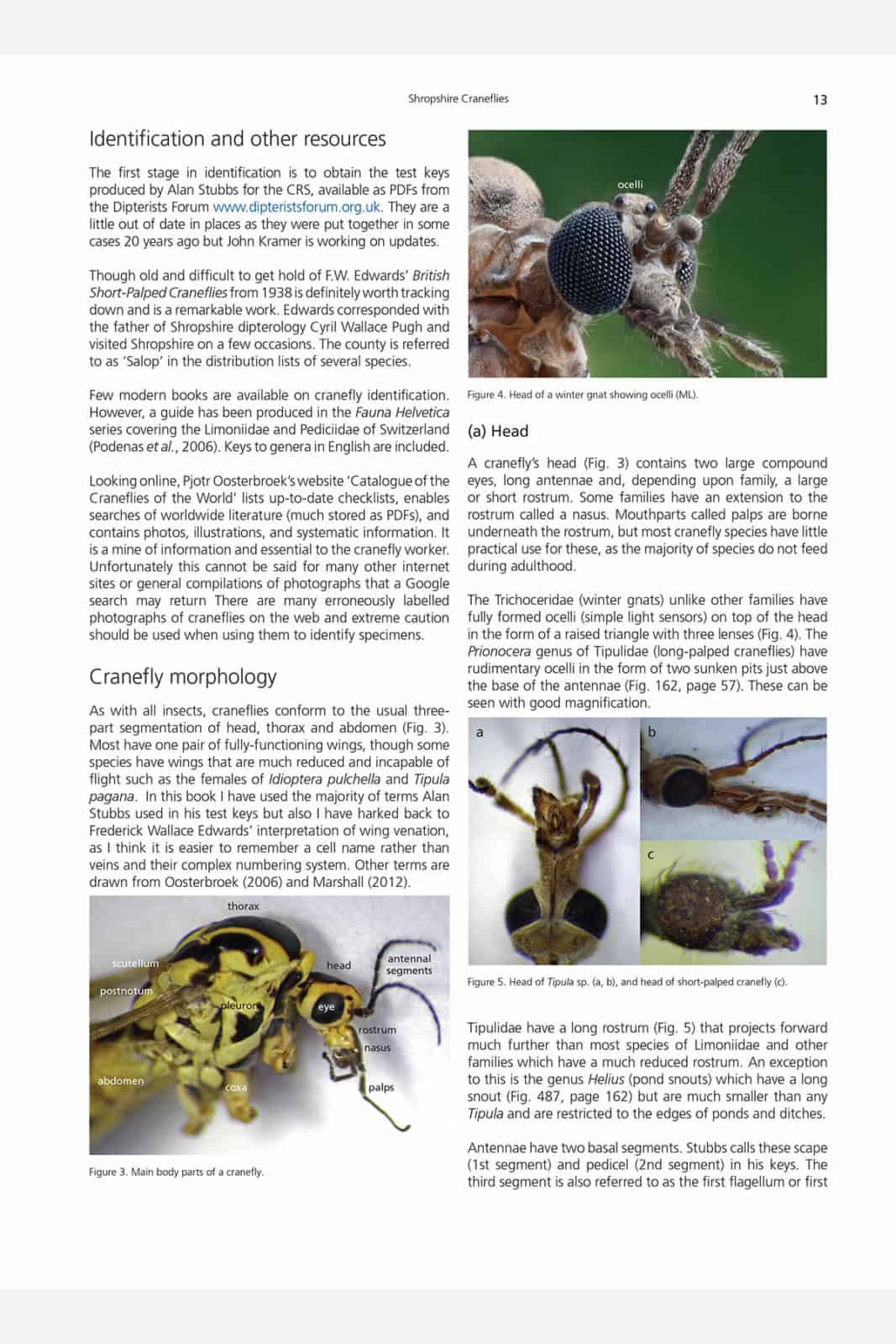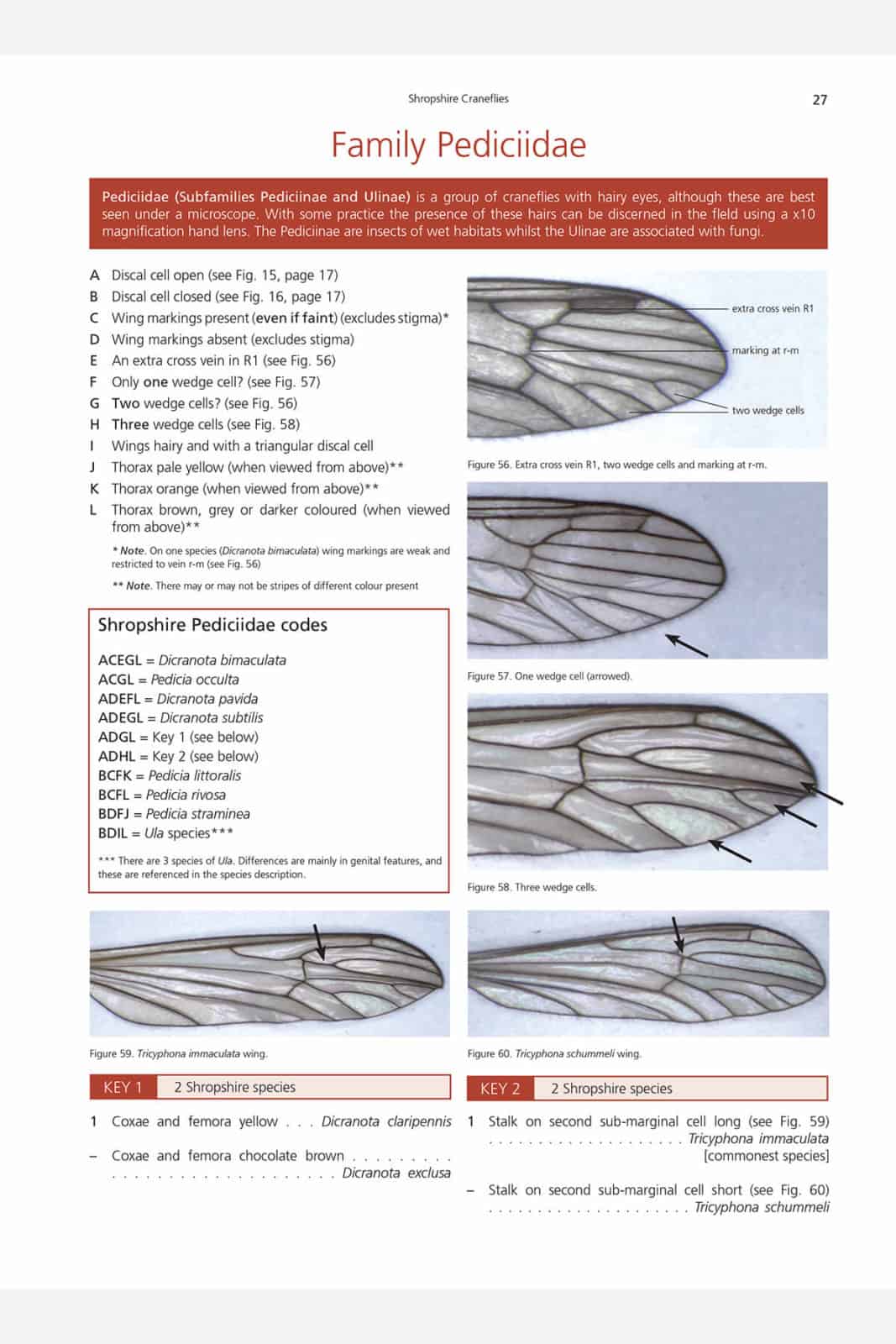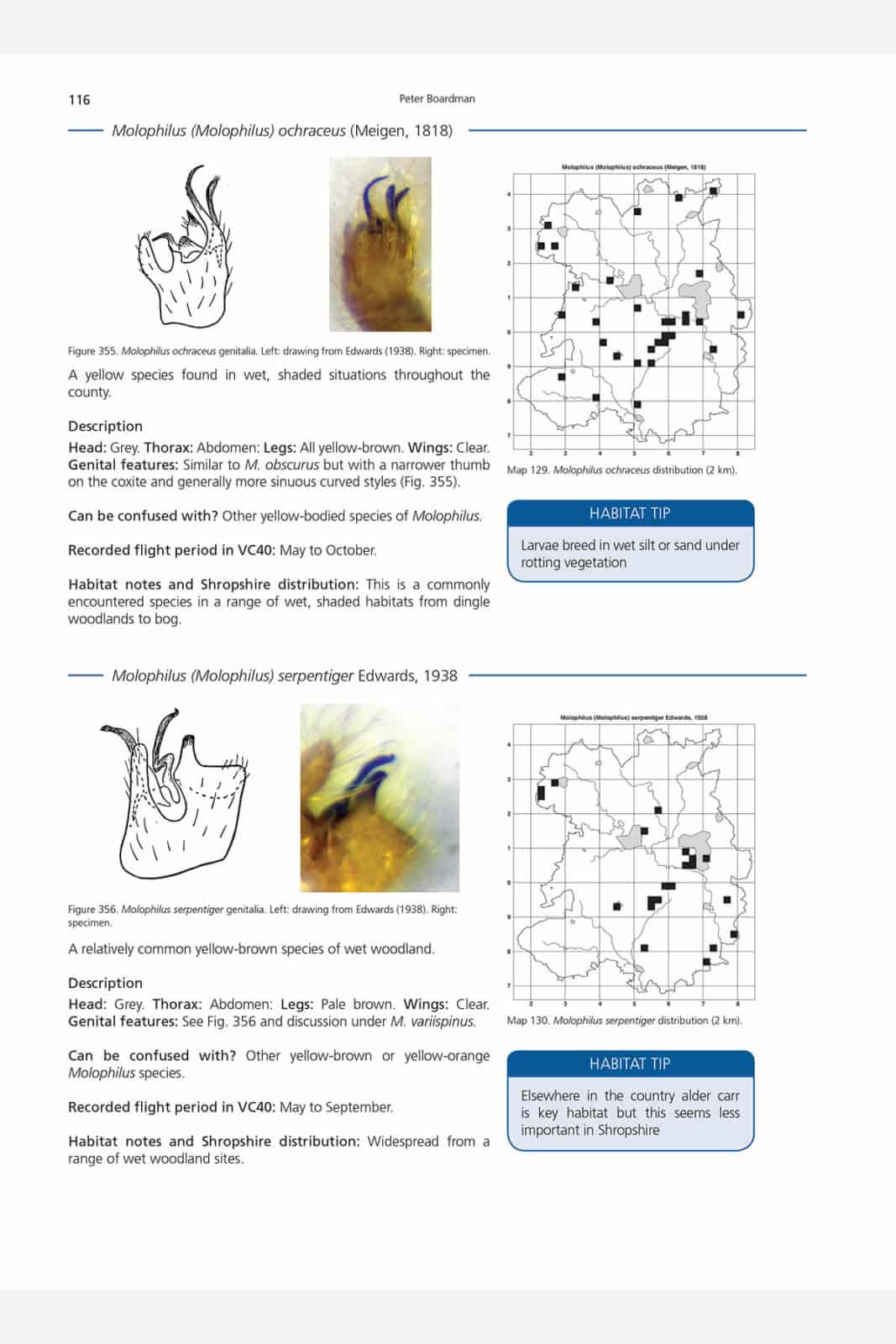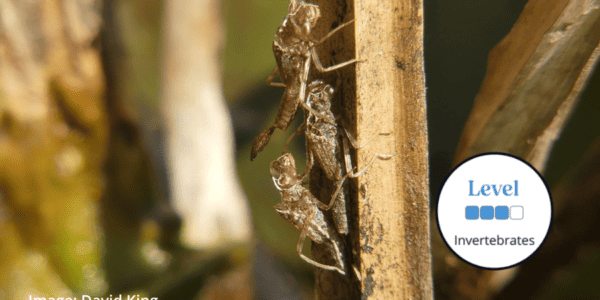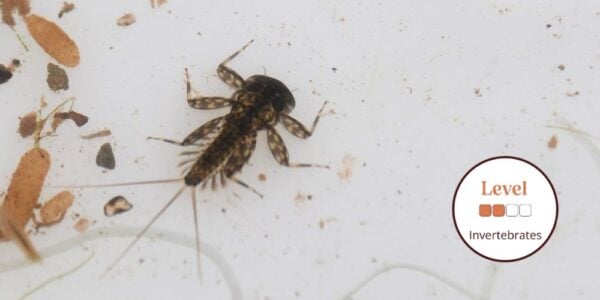Shropshire craneflies
Shropshire craneflies is so much more than a county atlas!
As well as being an up-to-date distribution atlas for Shropshire, it contains a full set of identification keys to the 245 cranefly taxa recorded in the county. It is based on over 10 000 records of craneflies and their allies, including winter gnats and fold-wing craneflies. Overall this volume is a comprehensive update to the first Shropshire atlas produced in 2007. Fieldwork since then has generated 5800 new records, and added 21 species to the Shropshire list. Author Pete Boardman is current national organiser for the UK Cranefly Recording Scheme.
So why craneflies? To the wider world craneflies remain largely unloved and unstudied compared with many other groups of insects. However they play an important role in the food chain. Many species are of conservation importance. Most months of the year offer the opportunity to find species in the field. Due to their short life-cycles, craneflies may also offer an insight into climate change.
Shropshire is a large inland county containing a great deal of habitat diversity within its boundaries. Significant areas for craneflies include the dingle woodlands of Ironbridge Gorge, the wetlands of the Meres and Mosses and the calcareous habitats of Wenlock Edge, Oswestry Hills and the Wyre Forest. There are cranefly records from all 870 whole tetrads, plus a further 65 part tetrads around the edge of the county.
This atlas is one of a number examining the distribution of some of Shropshire’s invertebrate groups. The atlases follow an upsurge in entomological interest in Shropshire that has been encouraged by the Invertebrate Challenge Project, funded by the Heritage Lottery Fund.

